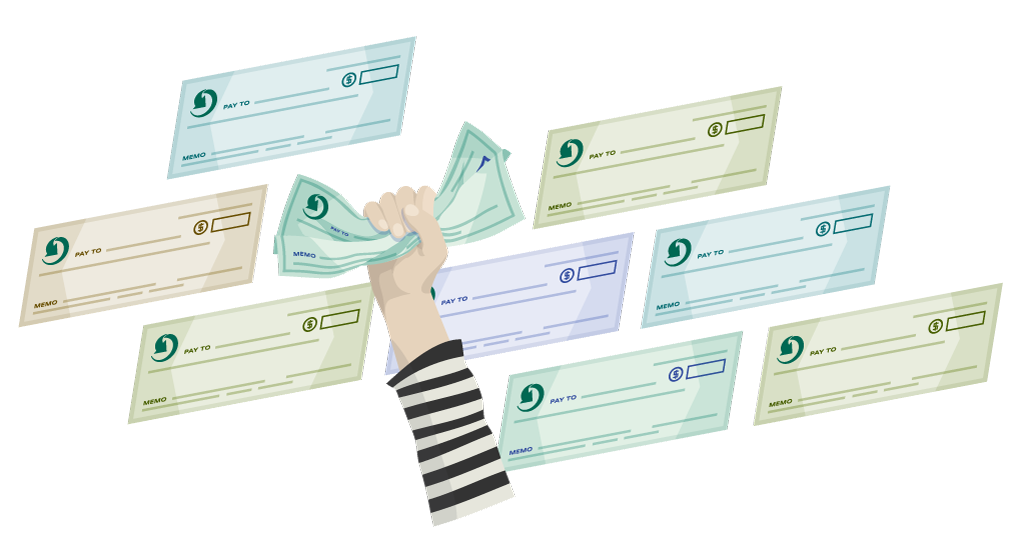
Fraud Education
About

Check Fraud by Mail Theft
Despite widespread use of online banking and payment apps, many Americans continue to send paper checks in the mail. New statistics from the Financial Crime Enforcement Network are enough to make anyone think twice about mailing a paper check.
In 2021, financial institutions reported more than 350,000 instances of potential check fraud. In 2022, just one year later, the number of reports nearly doubled to 680,000. With true losses estimated in the billions, reported fraud is just a drop in the bucket. It’s time to think about how you can protect yourself from fraud.

How can you spot check fraud?
Criminals steal personal checks, business checks, tax refund checks, and other checks like those for Social Security or unemployment benefits. Thieves troll for checks in outgoing and incoming mail in home mailboxes and community collection boxes and even resort to stealing mail from postal carriers. “Fishing for checks” is as easy as:
- Attaching something sticky to a weighted string and dropping it in a collection box
- Looking for residential mailboxes with raised flags
- Breaking into a cluster-mailbox unit at an apartment or condo community
Once stolen, thieves modify checks by erasing ink — called check washing — using household chemicals and then rewriting the check with a new payee and amount before cashing it. Some thieves sell washed checks to buyers online or use a real check’s account and routing numbers to create fake checks.
A good rule of thumb: If you wouldn’t feel comfortable mailing an amount in cash, then don’t mail it in a check either.
What steps help stop check fraud?
One of the easiest ways to prevent check fraud is to pay bills online or through a secure payment app. If you must mail a check, take steps to make it harder to steal:
- When writing a check, make sure the long-form amount uses the entire line and that the numeric amount fills the box completely.
- Drop mail that includes a check inside a post office or mail facility.
- Put outgoing mail in your mailbox just before the carrier arrives.
- Retrieve incoming mail just after delivery.
- Don’t let mail sit in your mailbox overnight or during a vacation.
With a victim’s personal identifiable information in hand, it’s easy for a scammer to undertake additional schemes such as credit card fraud or credit account fraud. If you think you’re a victim of check or mail fraud, report it to your bank and the United States Postal Inspection Service immediately.
Sources: FinCEN.gov, AARP.org, Forbes.com



